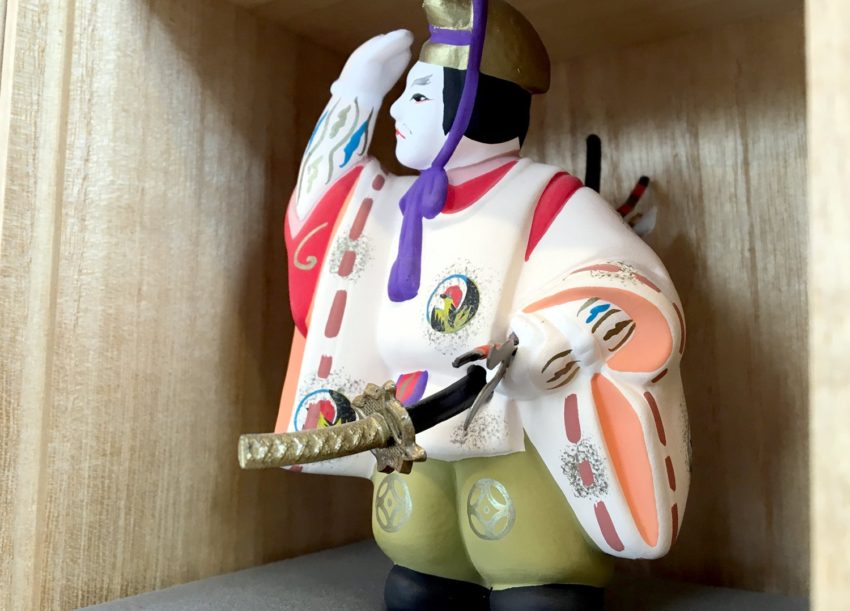Japan is a land that has been admired for centuries because of its incredible swords. As these blades have changed form over time, so have the techniques behind their use. This article will highlight several types of Japanese sword fighting style, as well as cover the focus, effectiveness, origins and gear involved in those styles.
An Overview of The Japanese Sword Fighting Style
Before we delve into the specifics of the various kinds of Japanese sword fighting style, we must first list those styles and give a brief overview of each.
- Kenjutsu – “Techniques of the sword” that developed during the tumult of the Kamakura Period.
- Kendo – The “way of the sword,” notable for its considerable protection.
- Iaido – This Japanese sword fighting style is concerned with optimal energy expenditure, blending drawing and striking into one motion.
- Goshindo – This Japanese sword fighting style, also known as chanbara, mixes modern sensibilities with kenjutsu practice.
- Shinkendo – This Japanese sword fighting style is the “real way of the sword” and focuses on techniques involving properly edged blades.
- Aikiken – This Japanese sword fighting style blends aikido with swordsmanship.
- Ninjaken – Ninja swordsmanship.
Is One Style Superior to the Rest?
As if that rundown of these styles was not already a clue, different Japanese sword fighting styles are suited for different purposes. The effectiveness of a style is directly related to its intended purpose. For example:
- Kenjutsu began life as a military discipline, intended for killing. Tsukahara Bokuden, its most famous practitioner, killed 100 men in duels and survived 37 trips to the battlefield.
- Kendo is more of a modern martial art, with techniques intended to improve one’s sense of self and honor. It was re-branded from kenjutsu in order to differentiate itself from kenjutsu’s lethality.
- Iaido marries kenjutsu’s efficiency with kendo’s continual search for personal growth.
- Chanbara, sometimes known as “the art of practice,” is what you study if you wanted to mimic the samurai of Japanese cinema. Although it began as a form of stage fighting using plastic swords to “sell” hits for the camera, it has since developed into a popular combat sport.
- Shinkendo is the most serious and comprehensive style. Practitioners are required to learn everything there is to know about swords: forms, safety, ways of cutting with and drawing a sword, practice sessions alone and with partners, etiquette and even the history of Japanese swords.
- Aikiken is a weapon form of aikidoAIKIDO 合気道 "way of gathering energy" learn more.... While a bokken will not kill, skilled aikikenka can certainly fend off attackers.
- Ninjaken is all about pragmatic fighting, emphasizes use of a short sword, its scabbard and the scabbard’s cord as tools and weaponry.
“War Never Changes But Its Tools Do.”
The sword made it to Japanese shores, by way of China, around 200 BC. Nearly a millennium later, in 700 AD, swords were being made at home. Two centuries later, the bushi warrior class came into being with the prototypical nihontoNIHONTO 日本刀 "Japanese sword" learn more..., or “Japanese curved-blade sword,” coming along for the ride. Everyone was a novice with these new tools; most sword techniques between the 9th century and the late Kamakura Period boiled down to “kill your enemy”.
Kenjutsu changed this.
In a time of “Six Ancient Martial Arts,” kenjutsu accounted for the largest number of adherents. It is worth mentioning that the other arts were archery, unarmed combat, firearms, cavalry and the spear. The development of bushido, the code that defined a samurai’s purpose and life, only further cemented the sword’s role in Japanese society until the latter end of the 20th century. Yagyu Shinkage Ryu, the most famous school of kenjutsu (possibly for having been taught to Shogun Tokugawa) survives intact to this day.
Iaido came into existence in the mid-1500s, thanks to the efforts of Hayashizaki Jinsuke Shigenobu. While hundreds of iaidoIAIDO 居合道 "art of drawing a sword" learn more... schools opened, focusing on different movements and techniques, Shigenobu believed that with time and practice all paths lead to the same outcome. Elsewhere, records of ninja, and their swordsmanship, began showing up around the 15th century and their legend continued to grow well into the second half of the 1800s.
The next few centuries would see sword-fighting schools emerge throughout Japan. The legendary Miyamoto Musashi wrote The Book of Five Rings, a very influential text concerning swordsmanship, in 1645. The boom in swordsmanship eventually settled when the Meiji government restricted on who could legally carry swords. (Katana were completely forbidden for anyone not working for the government.) By 1870, interest in kenjutsu increased, if only to better train Japan’s police. The 18th century also saw the introduction of protective clothing and the safer shinaiSHINAI 竹刀 "bamboo sword" learn more..., instead of katana, to kenjutsu training.
The martial discipline known as kendoKENDO 剣道 "the way of the sword" learn more..., as we recognize it, did not come into being until 1912. While “kenjutsu” and “kendo” are very similar terms, the latter was coined as a way of distinguishing itself from kenjutsu’s lethal intentions. Another evolution of Japanese sword-fighting from the early 20th century concerned aikidoAIKIDO 合気道 "way of gathering energy" learn more...; while aikido is a fighting style concerning grabs, locks and throws, its “weapon form” of aikiken is just as “young,” having been formalized at the same time as the discipline itself, somewhere between the 1920s and 1930s.
Japan banned kendo in 1946, only to reintroduce it as “shinai kyougi” in 1950, and then revert back to “kendo” in 1952. At this time, the All Japan Kendo Federation (AJKF) was also established. In the 1960s, iaido was standardized under this organization so that practitioners’ skills could be assessed under the same scrutiny, regardless of country. The year of 1969 would see the creation of chanbara, marrying kenjutsu techniques with the practicality of avoiding injuries to film a scene. In 1970, the AJKF became the “KF” in order to focus on kendo in all countries.
“I Know I’ve Heard of Most of These. What’s the Most Popular?”
While most of these styles have survived into the present day, their popularity, especially in the west, is a different matter. Kendo is the most prolific style in the west, to the point that English comedian Eddie Izzard has an entire bit about kendo being ideal for a street fight. (The punchline is that it takes so long to put on all the gear that either passions cool, or you have so much protection that blows have little impact.) Kenjutsu and kendo are both extremely well known and regarded in Japan, with chanbara having a bit of appreciation among subcultures focused on classic samurai films.
The main reason these styles have endured and become so popular may likely be attributed to tourism (visitors watch live demonstrations) and the media. So many films, anime and manga have showcased swordsmanship throughout the ages that generations continue to find inspiration and interest in these disciplines.
“I Know I Need a Sword But There Has To Be More Than That, Right?”
You’ll need some type of blade to practice a Japanese sword fighting style, but what other gear is required? This is a good question to ask for anyone interested in studying these styles.
- Kenjutsu requires a jacket, trousers and belt. Full-contact kenjutsu also necessitates a helmet, head towel, gloves, waist armor and breastplate. Training involves a wooden bokken or bamboo shinai. Kenjutsu practitioners who have moved beyond practice and training will use either a katana, kodachiKODACHI 小太刀 "small tachi sword" learn more..., or nodachiNODACHI 野太刀 "field sword" learn more....
- Kendo requires a lot of protective gear, especially around the head, arms and body. It can be very physical; kendo is a very loud sport full of shouts and bare foot stomps against wooden flooring. Kendo focuses on improving the self, includes the control of emotions like anger and fear. Kendo requires a shinai.
- Iaido is all about drawing and striking with the katana. This means that anyone looking to study iaido needs a blade (or a replica of a blade) that properly rests in a scabbard.
- The chanbara of today is a full speed, high impact combat sport that calls for a choken (plastic sword) and padding, rather than the proper body armor of kendo and kenjutsu. Anyone who has ever put together a boffer or LARP kit has a basic understanding of the sort of gear a person might might need in order to study chanbara.
- Shinkendo has a strict progression of implements that is intended to scale with the student’s understanding of his art and how lethal a katana can be, both to the self and to others. Initiates begin with a wooden bokken, then an edgeless iaito and finally a shinken, an honest-to-god lethal sword. Practicing and studying shinkendo also requires access to a bamboo and straw mats for cutting practice.
- Aikiken‘s equipment needs are pretty basic, just the usual gi used in aikido and a bokken. As an aside, aikido has other weapons forms involving a short staff (aikijo) and knife.
- Ninjaken – Ninjas used a short sword paired with a lengthy scabbard. This allowed the scabbard to double as storage for tools, documents or anything else a mission required. The cord attached to the scabbard was also long enough to serve as a rope, able to bind or trip enemies. Because ninjatoNINJATO 忍者刀 "ninja sword" learn more... were not as sharp as katana, most techniques emphasize use of body weight; most strikes are violent thrusts and techniques that drag the blade across a body, cutting as it goes.

